Valuation Of Licensee Retail Store Licenses
February 23, 2015 | by Dennis Coates QC
Valuation of an LRS is a process which includes determining existing cash flow and evaluating the potential positive and negative influences on value and cash flow. The LRS license may have a value independent of cash flow if a better location for the business can be found that would meet the approval of local government and the LCLB.
The valuation process begins with the calculation of the EBITDA for the specific LRS.
EBITDA – Earnings Before Interest Taxes, Depreciation, and Amortization. Another way of describing EBITDA is that it represents the cash flow generated from your store prior to servicing interest on the debt, giving the government their corporate income tax due, or amortizing the value of the original capital assets on an annual basis.
Key factors to EBITDA include the present and future volumes and gross margins. If the gross margin is already low it is probably safe, and if it is higher the probability of continuing that margin is a critical factor. There are pockets of competition where liquor store pricing or margins of 16% are prevalent. As one store reduced prices ultimately the other stores in the area followed – reducing the EBITDA substantially and reducing the value of all of the stores substantially.
Other significant factors to consider include:
- future competition – can others relocate and take part of the volume?
- protection from local government rules on relocation
- relocation of Government Liquor Stores
- changes in government rules as they relate to both LRSs and GLSs
During the heady days of income trust acquisitions, prices on acquisitions got as high as 10 times EBITDA. The current norm seems to be a multiplier of between 4 and 6.
The pricing model decision has a profound influence on valuation because of how it can greatly affect EBITDA. By adopting a government liquor store pricing model, with the resultant gross profit of 16%, a private store will generate somewhere between 8% to 10% below the traditional private store pricing model. The result in profitability on making this decision on a liquor store generating $2.0 million in sales would be to reduce gross profit from $480,000 (based on 24% gross profit) to $320,000 (based on 16% gross profit). This reduction in gross profit of $160,000 would not be offset by any reduction in operating expenses and as a result EBITDA is reduced by the same amount – if EBITDA is reduced by $160,000 and if the multiplier were assumed to be five, then the reduction in the valuation of a liquor store in this example would be $800,000.
So why do operators compete want to compete on price with the government liquor store (GLS). The assumption is that by reducing prices to GLS prices, the sales/revenue of the liquor store should increase commensurately. Here is the math – in order to offset the reduction in gross profit by adopting the government liquor store prices, revenue in the above example would have to increase by 50% to $3.0 million in order to achieve the same gross profit of $480,000.
The above analysis is not intended to suggest that maintaining a private market pricing model versus a government liquor store pricing model is correct or incorrect – the point is somewhat more basic than that – you need to know your market to determine whether or not – based on location, competition, service, etc. – the reduction in the gross profit by the established pricing model will attract sufficient additional business so as to not affect your profitability – your EBITDA.
Aside from the above, LRSs seem to have an intrinsic value depending on the community in which they are located. As an example, in Vancouver a license may sell for significantly higher than another LRS in a smaller community even if it is not profitable or the EBITDA multiplier does not justify the price. Potential purchasers may think they can find new locations and also there are very few licenses available.
On the other hand, in interior cities the intrinsic value may be only $100,000 to $300,000 as a purchase and relocation may not result in or create as large a potential cash flow. In most cities the key locations are already taken and the imposition of the one kilometre rule eliminates most opportunities.
The banks may finance on a cash flow basis 4 to 4.5 times EBITDA, which means substantial cash equity needs to be available in any sale/purchase transaction.
Many stores had high expectations of profit before they opened. Now, with real financial results as the basis for valuation, reality sets in.
Valuation is also relevant for an operator dividing the businesses of LP and LRS for personal, banking or tax reasons. There is a tricky change to the above valuation model if ownership is just replacing a Third Party Use agreement to a related company. In these circumstances, you need to deduct from the present value of the LRS business the value that was already realized by way of the TPU agreement.
Some individual factors which help drive EBITDA, although by no means exhaustive, are noted below.
Location: The location of a store is often one of the most influencing factors in determining the profitability; whether it is convenient parking, driving patterns, proximity to other locations or the demographics of the neighbourhood. It is important to understand the benefits and risks of location to determine the product mix carried in inventory, the advertising required and the buying experience expected of the customer.
Pricing model: The continued involvement of the Provincial government in the retail liquor business has changed the landscape for all of those who entered the private liquor store market with the expectation of the supplier exiting the industry. The main influence that the government liquor stores have on the private liquor store industry is pricing. With a 16% discount off of government liquor store prices a private liquor store can only earn this gross margin if they choose to compete head on with the government stores. Despite better locations, chilled product and more casual atmosphere of private liquor stores, there is a drive in many markets to meet liquor store prices in order to ‘compete’.
Service: There are also intangible aspects of determining profitability. Intangibles such as management, customer service, quality of leasehold improvements, loyalty programs, etc. can all influence the ability to generate revenue and consequently increase EBITDA. Each factor in isolation has to be analyzed to determine its impact.
Since valuation is dictated primarily by EBITDA, understanding how these factors affect your store and responding to these factors in order to maximize profits will help you to maximize your EBITDA and resultant value.
Share this article:
Get your interests represented
As one of the largest law firms in the Interior, our lawyers have a broad range of specializations, ensuring that we have the experience to competently and professionally represent you.

